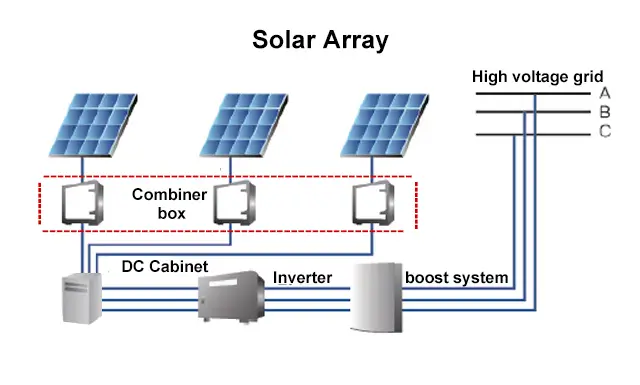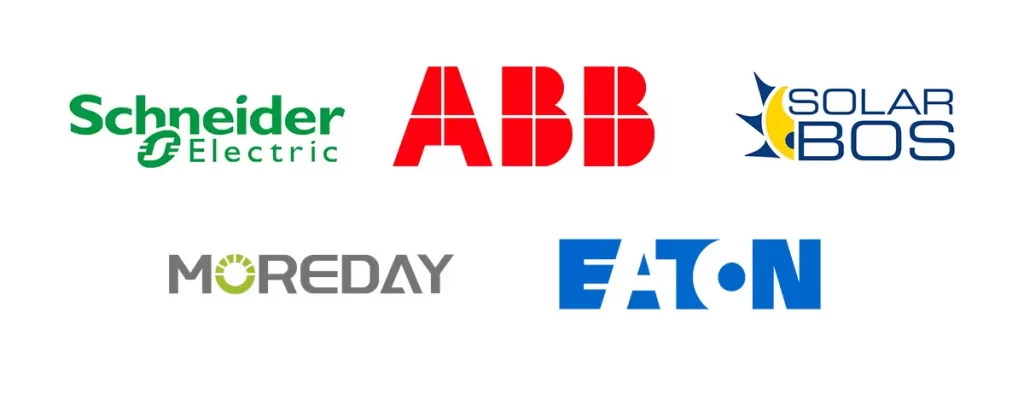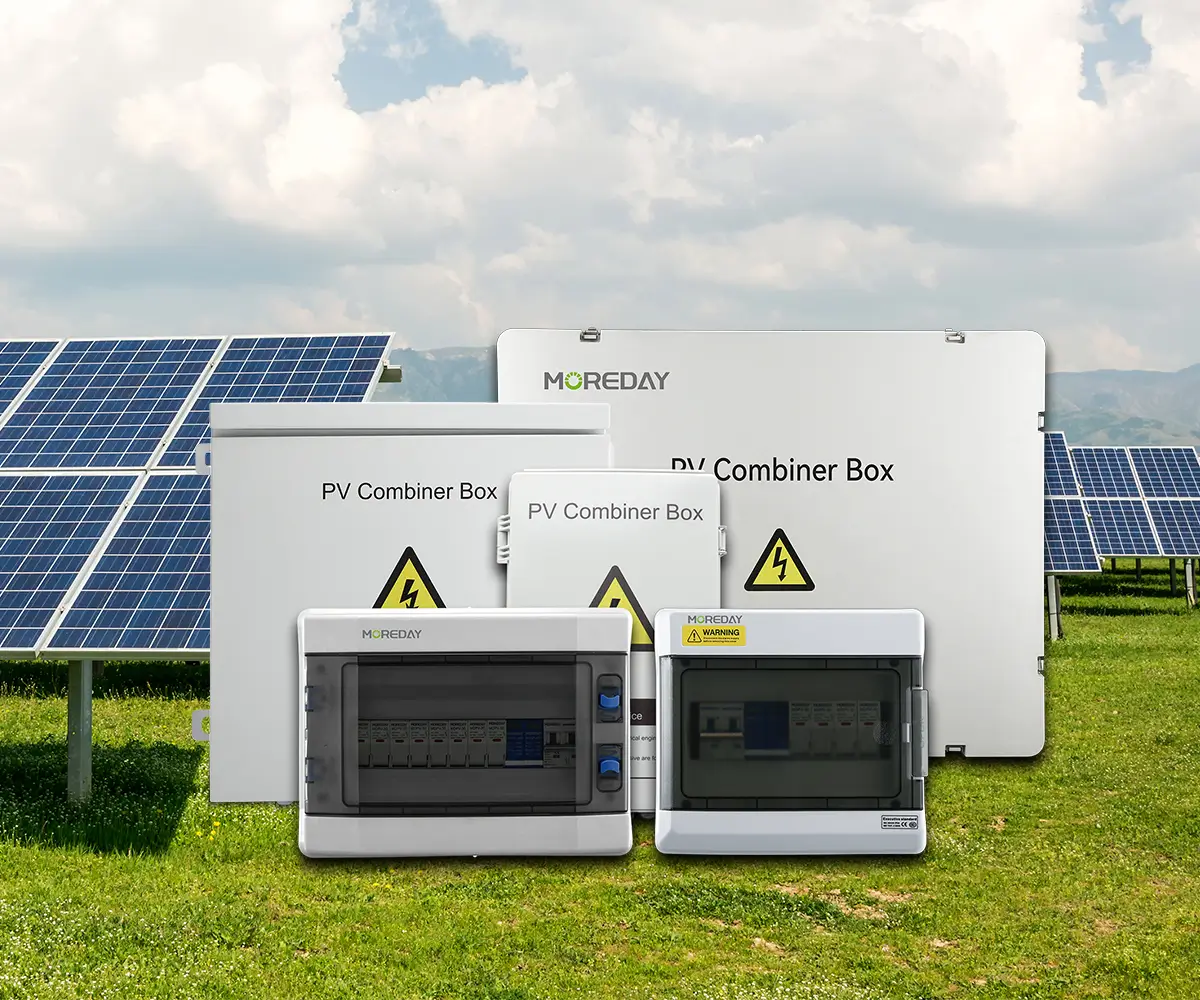How to Choose a Combiner Box?
Introduction
Recent years have seen a rise in the popularity of solar power systems, which can be attributed to the movement toward the use of renewable energy as well as the cost reduction of solar panels. The combiner box is an essential element of a solar power system. How can you choose the best one for your requirements when there are so many different options available on the market? In this piece, we’ll walk you through the steps of selecting the ideal combiner box for your solar power system so you can get the most out of it.
What Is A Combiner Box?
In the context of solar power systems, a “combiner box” refers to an electrical device that is used to combine the output of several solar panels, often known as “strings,” into a single connection point. The combined current is then fed into the inverter at this connection point, which converts the direct current (dc) to alternating current (ac) so that it can be used in your home or business.
Types Of Combiner Boxes
There are three main types of combiner boxes available:
Standard combiner box: This type of box simply combines the output of multiple solar panel strings without any additional features.
String monitoring combiner box: This box not only combines the output of solar panel strings but also monitors the performance of each string individually.
Smart combiner box: This advanced box combines the output of solar panel strings, monitors their performance, and can communicate with other system components, such as inverters and energy management systems.
Why Use A Combiner Box?
A combiner box offers several benefits:
Simplifies wiring: By combining the output of multiple strings into a single connection point, the combiner box makes wiring the solar power system easier and more organized.
Safety: Combiner boxes include safety features such as fuses or circuit breakers, which protect your system from damage due to overcurrent or short circuits.
Monitoring: Some combiner boxes enable you to monitor the performance of individual strings, helping you identify issues with solar panels or wiring.
Factors To Consider When Choosing A Combiner Box
When selecting a combiner box for your solar power system, consider the following factors:
1. Compatibility: Ensure the combiner box is compatible with your solar panels, inverter, and other system components.
2. Number of inputs and outputs: Determine how many strings of solar panels you have and choose a combiner box with enough inputs and outputs to accommodate your system.
3. Current rating: Select a combiner box with a current rating suitable for the maximum current your solar panel strings can produce.
4. Voltage rating: Choose a combiner box with a voltage rating that matches the maximum system voltage of your solar power system.
5. Safety features: Look for a combiner box with safety features such as surge protection, fuses, and circuit breakers to protect your solar power system from damage due to electrical faults.
6. Monitoring capabilities: If you want to monitor the performance of individual strings, opt for a string monitoring or smart combiner box.
7. Enclosure material: Select a combiner box with a durable enclosure material, such as stainless steel or polycarbonate, to ensure it can withstand harsh weather conditions.
Installation Considerations
When installing your combiner box, keep the following in mind:
Location: Place the combiner box close to the solar panels to minimize voltage drop and reduce the amount of wiring needed.
Accessibility: Ensure the combiner box is easily accessible for maintenance and troubleshooting.
Mounting: Mount the combiner box securely to a wall or other sturdy surface to prevent damage from wind or animals.
Wiring: Use high-quality wires and connectors to ensure a reliable connection between the combiner box and the other system components.

Maintenance Tips
It is essential to do routine maintenance on your combination lock box in order to ensure that it will last as long as possible and function to its full potential. Here are some helpful suggestions:
Examine the combiner box for any indications of damage or wear, such as cracks in the enclosure or terminals that have corroded.
Check the fuses and breakers in the circuit to make sure they are working properly, and replace them if any of them are blown or broken.
It is important to thoroughly clean the inside of the combiner box, removing any debris and dust that may be affecting its operation.
You should check the monitoring capabilities of the combiner box (if it has such capabilities) to ensure that they are accurately tracking the performance of the solar panel strings you have installed.
Cost Of Combiner Boxes
The price of a combiner box can vary considerably depending on its functions, brand, and physical form. Standard combiner boxes tend to be more reasonably priced, in contrast to string monitoring and smart combiner boxes, which tend to have a higher price tag due to the advanced functionality that they provide. You should look around and compare prices in order to get a combiner box that is both within your price range and satisfies your requirements.
Leading Combiner Box Brands
Schneider Electric
ABB
SolarBOS
MOREDAY
HUYU-Eaton

Conduct research into each brand’s history and read reviews written by previous customers to guarantee that you are purchasing a dependable and high-quality combiner box.
Conclusion
It is critical that you select the appropriate combiner box if you want to ensure the safety, efficiency, and effectiveness of your solar power system. You may choose the ideal combination box for your solar energy system by giving careful consideration to a number of different factors, including compatibility, the number of inputs and outputs, the current rating, the voltage rating, safety features, monitoring capabilities, and the material used for the enclosure. When making your choice, be sure not to overlook the importance of taking into account the costs of installation and maintenance.
Common Queries
Frequently Asked Questions
A: While it is possible to install a combiner box yourself, it is recommended to hire a professional solar installer to ensure proper installation and compliance with safety standards.
A: No, a combiner box is not necessary if you only have one string. However, it may still be beneficial to use one for safety features like surge protection and circuit breakers.
A: Regularly inspect the combiner box for signs of damage or wear, and ensure that the fuses and circuit breakers are functioning correctly. If you have a string monitoring or smart combiner box, check that the monitoring features are accurately tracking the performance of your solar panel strings.
A: Yes, combiner boxes are suitable for both residential and commercial solar power systems. When choosing a combiner box, ensure it meets the requirements of your specific system in terms of compatibility, a number of inputs and outputs, current rating, and voltage rating.
A: It is advisable to inspect your combiner box at least once a year for signs of wear, damage, or malfunction. This includes checking the fuses and circuit breakers, cleaning the inside of the box, and testing the monitoring capabilities (if applicable). If you notice any issues during your inspection, address them promptly to maintain the safety and efficiency of your solar power system.
A: Yes, Moreday’s products are designed to be durable and long-lasting. They are made with high-quality materials and are built to withstand harsh weather conditions and daily wear and tear.
A: Yes, Moreday offers a warranty on all of its products. The length of the warranty varies by product, so be sure to check the product details for specific warranty information.
A: You can contact Moreday by email or phone. Contact information is available on the Moreday website. Additionally, Moreday has a customer service team available to help with any questions or concerns you may have.
Tips For Maximizing The Performance Of Your Combiner Box
To get the most out of your combiner box, consider the following tips:
1. Regular inspections: As mentioned earlier, regularly inspect your combiner box for signs of damage, wear, or malfunction. Promptly address any issues you discover to maintain the optimal performance of your solar power system.
2. Optimal placement: Ensure that your combiner box is installed close to the solar panels to minimize voltage drop and reduce the amount of wiring needed. This can help improve the overall efficiency of your solar power system.
3. Use high-quality components: When connecting your combiner box to the rest of your solar power system, use high-quality wires, connectors, and other components. This will help ensure a reliable connection and reduce the risk of system failures.
4. Keep the combiner box clean: Dirt, dust, and debris can accumulate inside the combiner box and interfere with its performance. Clean the inside of the combiner box regularly to maintain its efficiency and prevent potential issues.
5. Upgrade to a smart combiner box: If you’re looking to enhance the performance and monitoring capabilities of your solar power system, consider upgrading to a smart combiner box. These advanced devices can communicate with other system components, such as inverters and energy management systems, providing you with valuable insights into the performance of your solar panels.
By following these tips and selecting the right combiner box for your solar power system, you’ll be well on your way to enjoying a safe, efficient, and high-performing solar energy setup.
Derek Ke
Hey, I’m Derek Ke, the founder of Moredaydc.com, an expert in solar electrical products and ev charging.
In the past 15 years, we have helped 60 countries and nearly 500 customers (such as farms, residences, industrial and commercial) solve new energy and green power problems. This article aims to share more knowledge about solar electricity and new energy with everyone, so that green electricity can enter every home.
Make Electricity Available To All People




